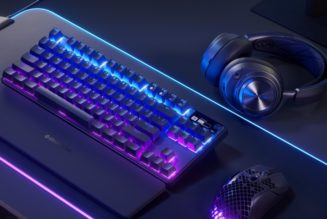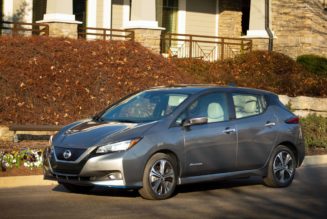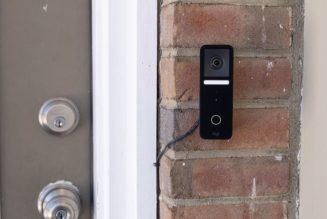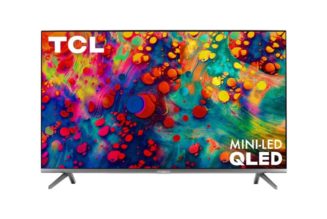The ultraportable space is a crowded one, including long-renowned models like the Microsoft Surface Pro 8, the Dell XPS 13, and the HP Spectre x360 14. These are all excellent laptops that aren’t extravagantly priced, with the potential to appeal to a very wide audience.
While the $1,729.99 Yoga 9i isn’t quite on the level of those devices when it comes to artistry, it’s certainly as enjoyable to use, and it has a somewhat eclectic array of unique benefits that make it stand out from that crowd. The main one is the OLED display, which has (thankfully) been moved to the 16:10 aspect ratio, as have many of Lenovo’s premium laptops in the past year. Other upgrades from last year’s model include a new edge-to-edge keyboard with an extra row of function keys, a larger touchpad, and rounded corners and edges that make for more comfortable use and a friendlier design.
Lenovo fixed pretty much every issue I had with last year’s Yoga 9i, and I’m very happy with the result. The device is also, however, currently much harder to get one’s hands on than it was last year. This is a good laptop that keeps getting better, and I wish it weren’t so difficult to buy right now.
Starting with the screen, which is a major part of this laptop’s appeal: It’s an OLED panel with 2880 x 1800 resolution (non-OLED 1920 x 1200 is also available, as is 4K OLED) and stylus support (but no built-in storage garage, disappointingly). The panel is glossy and kicks back remarkably little glare in bright settings, but I wasn’t the biggest fan of the texture. It picked up an unusually high concentration of smudges that were hard to remove during my week or so of use and wasn’t a particularly smooth glide when used as a touchscreen. That said, it does make for a great picture, with excellent contrast and colors that popped.
:no_upscale()/cdn.vox-cdn.com/uploads/chorus_asset/file/23422511/akrales_220426_5143_0051.jpg)
:no_upscale()/cdn.vox-cdn.com/uploads/chorus_asset/file/23422510/akrales_220426_5143_0041.jpg)
The other big change is that the keyboard is now edge-to-edge with a row of function keys on the right side (similar to what HP has been doing on various models for a while). You can use them to change power profiles and audio profiles, blur the background on video calls, and toggle dark mode. These are handy, but I wish they were customizable — there’s no way to change them as far as I’ve been able to find, and I’m sure there are plenty of folks who could find better use for a dedicated hotkey than a dark mode toggle. The other thing to know about the keyboard is that the up and down arrows are half-sized, while the left and right are full-size. That doesn’t impact me too much, but I know it will make some of you unhappy.
I do like the keyboard a lot when it comes to, you know, typing. In particular, it’s very quiet. This has gotten more important to me as I’ve been bringing laptops out and about more often — your typing shouldn’t be a distraction to people around you. Lenovo has also increased the size of the touchpad to 3.15 x 5.31 inches. I didn’t have any particular problem with the old touchpad’s size, but, sure, I’ll take a bigger touchpad (and there weren’t any palm rejection issues).
The third major thing that’s new is the look. The new Yoga 9i is very, very round. The corners are round, and the edges are round. Everything’s round. This wasn’t something I really noticed in the pictures when this device was announced, but it makes a huge difference up close. I didn’t realize how much sharp laptop edges can dig into your wrists until I used the Yoga 9i. This device is significantly much more pleasant to carry and use than the sea of sharp-edged laptops out there (especially stuff with very pronounced edges like the Spectre line), and now I don’t want to go back. It actually seems like such a no-brainer design choice that I really hope more laptop makers will follow suit here.
The friendlier look hasn’t changed the build quality. The whole thing is aluminum, and it’s impressively sturdy. There’s no flex in the screen or keyboard. The hinge is sturdy and easy to open and close, with no screen wobble that I observed. The finish is good, retaining no scratches, no fingerprints, and no dents after a fairly rough week of testing that included a flight and multiple train journeys. The device’s reasonable (though far from category-topping) weight of 3.09 pounds makes it a convenient travel companion as well.
And the conference call experience has gotten tweaks. The webcam has been upgraded to 1080p, and it’s significantly better than the camera on last year’s 9i was, delivering a clear and accurate picture. It has a physical shutter and supports Windows Hello facial recognition. Lenovo’s Smart Assist software (which is activated and deactivated in the Vantage control center) can also utilize it to turn the device off automatically when you step away.
The rotating soundbar in the hinge, long a staple of the Yoga 9i line, also now contains Bowers & Wilkins speakers. It continues to produce some of the best audio in the Windows laptop space. It’s so loud that I couldn’t listen to things over 80 percent without feeling bombarded.
:no_upscale()/cdn.vox-cdn.com/uploads/chorus_asset/file/23422512/akrales_220426_5143_0064.jpg)
:no_upscale()/cdn.vox-cdn.com/uploads/chorus_asset/file/23422506/akrales_220426_5143_0012.jpg)
Apart from the nitpicks mentioned above, the main notable issue is that the port selection — and this is not remotely unique in this space — is limited. You get two Thunderbolt 3 ports, one USB-C, one USB-A, a headphone jack, and that’s it. I’m glad to see the USB-A, which many competitors have thrown away, but those seeking an HDMI or SD slot will live in dongle-land.
There was also something going on with the built-in microphones because they came disconnected from my Zoom calls a few times while the device was running low on battery. Lenovo wasn’t able to replicate this issue, so I may have gotten a faulty unit.
:no_upscale()/cdn.vox-cdn.com/uploads/chorus_asset/file/23422515/akrales_220426_5143_0136.jpg)
The 9i configuration that I have (including an Intel Core i7-1260P, 16GB of RAM, 512GB of storage, and the 2880 x 1800 OLED screen) is a Best Buy model that Lenovo says will be $1,729.99. It is not for sale there yet. In fact, as of this writing, I haven’t been able to find any 12th Gen Yoga 9i models in stock anywhere, and a quick glance at other reviews shows that my experience isn’t unusual. (I’ve linked the 11th-Gen model, which you can still buy if this device sounds like your thing.)
It is getting to be a problem that up-to-date versions of these Lenovo laptops are so hard to find. (Lenovo says that Best Buy has models in the warehouse and that they’ll be back in stock again soon, but the company told me the Slim 7 would be back on shelves soon when I reviewed that, and a month later, I still can’t find it.) I know there are various things disrupting the supply chain in the world right now, but I’m not regularly having a problem finding in-stock retailer listings for most other laptops that have ostensibly already been released. As good as this laptop is, I feel somewhat restrained in how enthusiastically I can recommend it until I know you can actually buy it.
Ranting aside, the performance here was as good as you’d expect from a 28W 12th Gen Core i7. This 9i is definitely faster than last year’s 9i. It could handle a Zoom call atop a heap of tabs and apps on the Battery Saver power profile with little heat and very occasional fan noise. Editing a batch of photos was no trouble at all, though the lack of an SD slot likely makes the 9i a suboptimal choice for editors.
:no_upscale()/cdn.vox-cdn.com/uploads/chorus_asset/file/23422514/akrales_220426_5143_0088.jpg)
In terms of battery life, the 9i averaged seven hours and 38 minutes of continuous work use, which included a heap of Chrome tabs with some Zoom calls and Spotify streaming overtop here and there. That’s shaping up to be around what you can expect from ultraportables in this Intel generation. You can likely make it through a workday on lighter workloads — on a day when I was mostly using Google Docs and didn’t have any Zoom calls, I got closer to nine hours.
One annoyance: Like many other Yoga laptops, this thing comes with a lot of bloatware. Various McAfee antivirus programs were pre-installed, and I was getting pop-ups all the time. Uninstalling it took a while and required me to close all my tabs and restart the system at the end. That feels a bit overboard for a device that’s close to $2,000.
The biggest knock against the Yoga 9i is currently its availability. The fact that it’s out of stock all over the place is a real shame because I’d otherwise send a lot of people its way. The speaker issue is also a pretty big nuisance that I hope is resolved — watch this space for that, as it will probably impact the score.
In a world where those two problems are fixed, the Yoga 9i is a great package with a few dings here and there that will be issues for some but probably not for most. I’d use it over the $3,000 ThinkPad X1 Yoga any day — the ThinkPad is a technically better laptop, but the 9i is friendlier and more fun.
The 9i has been a great laptop for a while, but the addition of the 16:10 aspect ratio, the upgraded webcam, and the continuously exceptional audio, in addition to the solid performance, bring it to newer heights. Now, if only you could actually buy it.









